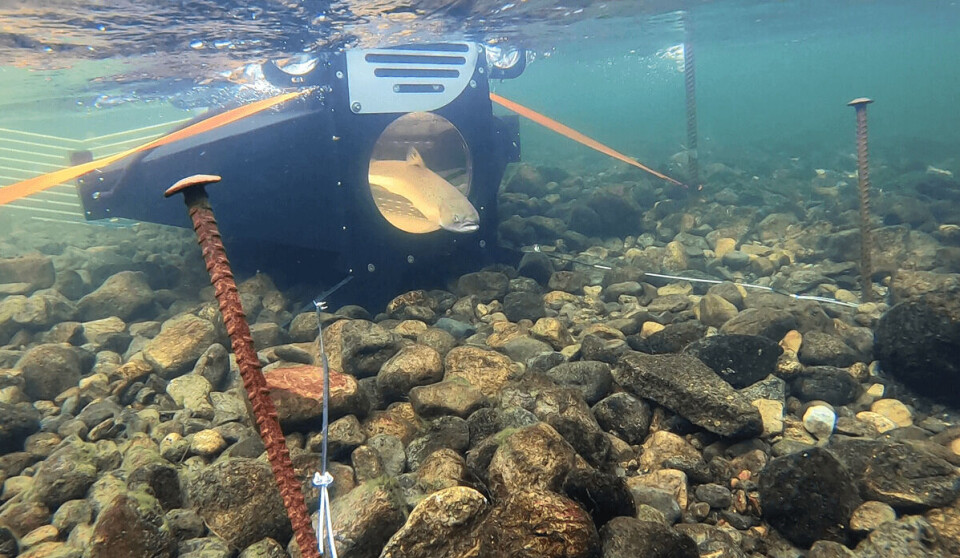
Caught on camera: how AI will stop escaped salmon going upriver
Machine learning is being used to develop automatic sorting of wild salmon and fish farm escapees in Norwegian rivers.
A special camera system called QuadEye, developed and delivered by Submerged AS, has been incorporated into a salmon trap on the River Etne in Vestland, south of Bergen. Every fish must pass through the trap – and past the camera – if it wants to move upstream, so all fish that go upriver are photographed.
The images and data that are taken will be used to train artificial intelligence to sort between escaped and wild salmon and sea trout, and at the same time give the researchers good data on length and weight.
First fish ‘selfie’
The intention is to then use the trained AI to run automatic sorting, where the wild fish are allowed to pass while the escapees are taken out, says Øystein Skaala from the Institute of Marine Research (IMR).
“The first fish to take a ‘selfie’ in Etne was a shiny and nice female salmon of 3.1 kilos. It emigrated from the River Etne as a smolt in 2019, and now it is back after a cruise of 100 miles or more in the Norwegian Sea,” says Skaala.
QuadEye consists of four cameras, each taking two to 18 images per second, which reveals wear on the fins, pigmentation on the body of the fish and tiny cuts.
“We also clearly see the lice damage on the head of this salmon,” says Skaala when he studies the first fish that was photographed.
PIT mark
The next to pass the QuadEye camera is a small salmon that was marked with a so-called PIT mark that smolted in the Etneelva in the spring of 2019. The tension rises when the fish swims through the camera tunnel. Is the integrated PIT antenna able to register the mark?
“Yes! The PIT number popped up on the screen before we had time to say ‘PIT’. This bodes well for the further work,” says Skaala.
“Now salmon and sea trout are almost in line to take selfies in the new photo tunnel in Etne,” he adds.






















































